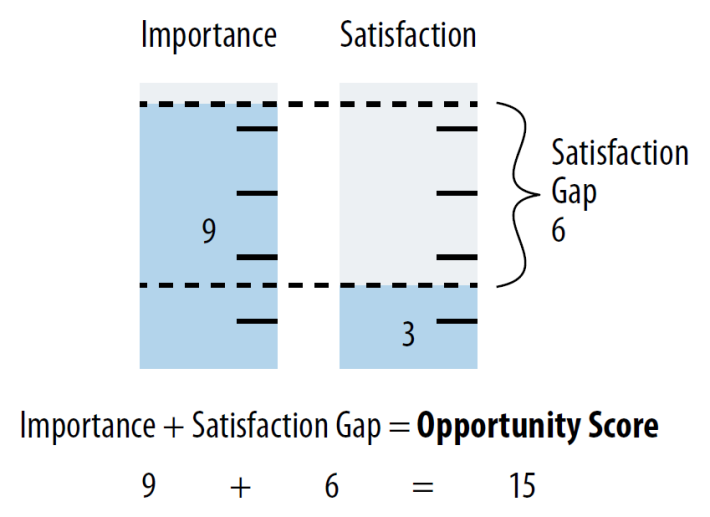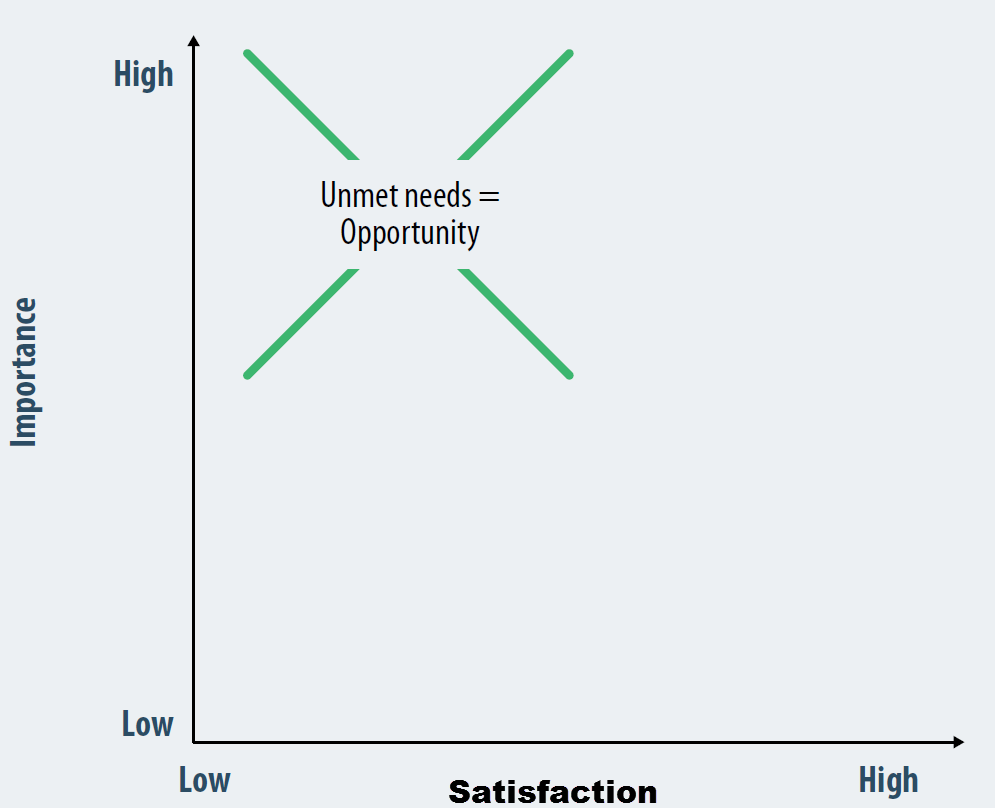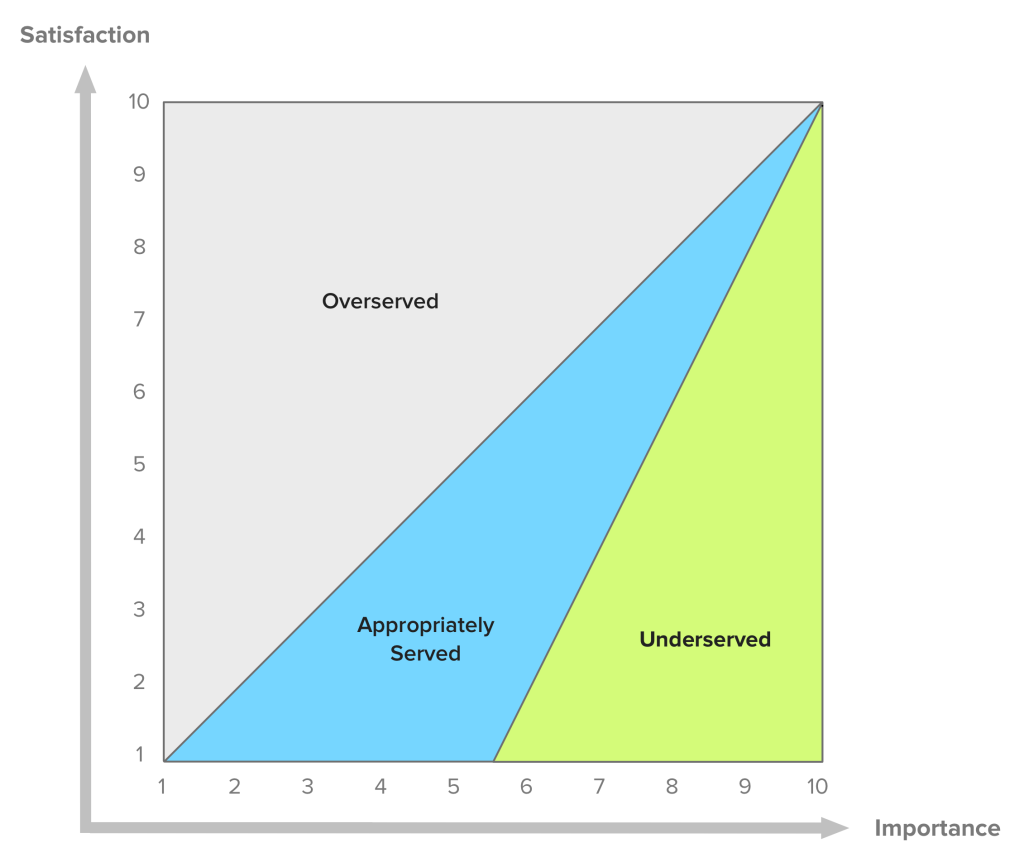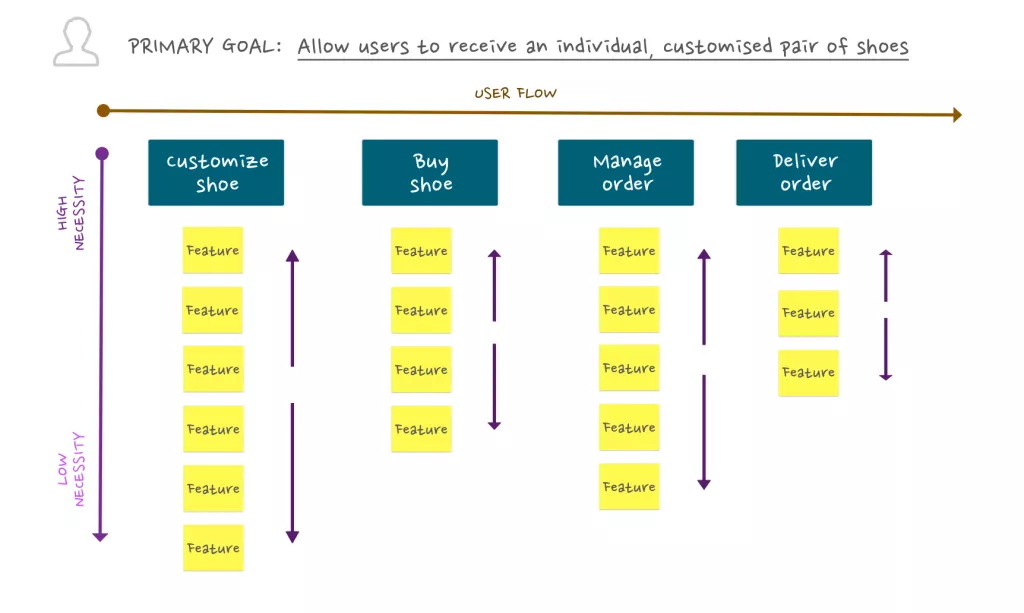Prioritization Frameworks
Summary of Prioritization Attributes
- Impact / Magnitude
- Value
- Reach / Size of Audience / Scale
- Confidence
- Effort / Complexity / Feasibility
- Risk
- Cost
- Level of Customer Satisfaction
- Frequency of Complaints
- Importance
- Urgency
RICE
Reach Estimation of how many people each project will affect within a given period. Measured in number of people/events per time period.
- Use quantitative metrics to determine potential audience
Impact Estimation of the impact on an individual person. Measuring can be subjective, leverage scale as outlined: 3 = “massive impact”, 2 = “high”, 1 = “medium”, 0.5 = “low”, .25 = “minimal”.
- Leverage user research to estimate impact
Confidence The level of confidence you have about your estimates. Measuring is subjective, leverage scale as outlined: 100% = “high confidence”, 80% = “medium”, 50% = “low”
- Use the other 3 measurements to help influence the confidence. The more clearly defined measurements of the other 3 increase the confidence.
Effort Estimation of the total amount of time a project will require from all members of your team: product, design, and engineering. Measured in a number of “person-months” - the work that one team member can do in a month. Recommend sticking to whole numbers, unless something takes far less than a month.
- Combine all time estimates for all teams involved and figure out how many months it would take for a single person.
Scoring

Opportunity Scoring (JBTD)
Prioritize jobs to be done by mapping out each job to its importance and the current satisfaction based on research.

Opportunity Diagram

Other Matrixes
Impact Effort Matrix
Sometimes as described as the Value Complexity Matrix.

Satisfaction Importance Diagram

Agile Story Mapping

Importance Sarisfaction Matrix
References
- https://blog.cayenneapps.com/2014/11/25/5-steps-to-building-minimum-viable-product-with-story-mapping/
- https://wildbit.com/blog/2016/05/11/how-we-built-a-product-vision-and-roadmap
- https://blog.intercom.io/rice-simple-prioritization-for-product-managers/
- https://experiencinginformation.com/2016/12/11/combining-mental-model-diagrams-and-jobs-to-be-done/
- Tony Ulwick https://en.wikipedia.org/wiki/Outcome-Driven_Innovation (Opportunity Algorithm)